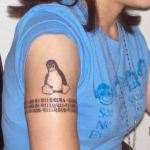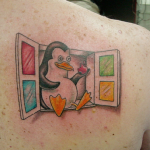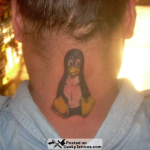Contents
- Quick Stats
- Profile Summary
- Timeline
- Related Videos
- Images by Linux Lovers
- Related Slideshares
- Related Articles
- Related Web
| Certified Cult Brand | ||||
 | We have tracked businesses with unprecedented brand loyalty since 2001. A Certified Cult Brand is a designation we hold for brands that fulfill specific market criteria, including upholding the Seven Rules of Cult Brands. | |||
Linux Quick Stats
Linux is a leading server operating system, and runs the 10 fastest supercomputers in the world.
Linux powers 446 of the world’s top 500 supercomputers.
Google runs its web servers on Linux.
Any person or group distributing the Linux kernel must make the source code available to the recipient of the package.
$7.37 billion: projected cost to produce that amount of code in a commercial environment.
The federal government of Brazil favors Linux operating systems over all others in its PCs.
Interactive Data Corporation projects that Linux support sales will top $1 billion by 2012.
Linux Cult Brand Summary
As far back as the 1960s and the very beginning of the Internet, a sense of cooperation and brotherhood has always existed among computer programmers. However, as of 1990, computer geeks were still without a reliable and affordable operating system to “call their own.”
UNIX, widely used by engineers in universities and large corporations, was expensive to run and wasn’t intended for low-powered desktop machines. What were these frustrated programmers to do when they went home at night? In 1991, Linus Torvalds, a twenty-one-year-old college student, set out to change this picture and develop a “cheap alternative” to UNIX. In the summer of 1991, Torvalds posted version 0.01 of the kernel for a new, free, powerful operating system that he called Linux. Within very little time, programmers around the world started sending Torvalds snippets of code. Torvalds posted the source code in public view, and the programming community liked what they saw.
Today, Linux has millions of users around the world, and Torvalds is treated as a near-religious figure responsible for freeing a nation of engineers from their chains to sub-par operating systems.
The open source development process doesn’t discriminate. The best code always wins in the Linux nation, whether it comes from a fourteen-year-old kid in Buenos Aires or a fifty-year-old verteran programmer working for a major corporation. They know they will be judged by their peers by the quality of their work and their ideas, and not by their age, job title, background, or work experience.
In making Linux open source, Torvalds allowed its brand evangelists not only to make helpful suggestions, but to actually build it. They could see their thoughts and dreams in the form of lines of computer code being intertwined into the core of Linux. Piece by piece, they really were building an alternative to Windows.
Microsoft played right into the Linux movement’s hands, becoming the most visible representation of “the dark side.” In 2001, Microsoft CEO Steve Balmer stated that, “Linux is a cancer.” These types of public comments from the world’s largest software company only furthered the fervor and resolve of many open-source devotees. Every revolution needs a villain, and Microsoft’s critical public comments have only helped to unify the Linux brand.
By 1996, lively discussion had begun among open-source developers that the new operating system clearly needed to have its own mascot and logo. Ferocious animals like sharks, eagles, hawks, and foxes came up, but Torvalds hopped into the discussion and casually said to the open source community that he was rather fond of penguins.
A fun-loving penguin was the antithesis of the logos of other tech products: they were cold and corporate. The penguin screamed: We’re different! But Torvalds didn’t want just any penguin for the logo, he wanted one that “looked happy, as if it had just polished off a pitcher of beer and then had the best sex of its life.”
After Torvalds spoke his mind, and the Linux community agreed, an informal contest was held to select the exact penguin logo that Linux developers could rally behind. The eventual choice was a fun painting of a plump by content sitting penguin submitted by graphic artist Larry Ewing.
Today, the Linux Penguin appears in everything from IBM’s high profile campaigns to Linux T-Shirts, toys, and product packaging. The open source community has given the plump penguin its own name, Tux. The imaginary penguin is truly a star.
Linux Timeline
provided by http://www.linuxjournal.com/article/6000 and http://en.wikipedia.org/wiki/History_of_Linux
1983
The GNU Project, started by Richard Stallman, had the goal of creating a “complete Unix-compatible software system” composed entirely of free software.
April 1991
Linus Torvalds, a 21-year-old student at the University of Helsinki, Finland started working on some simple ideas for an operating system.
August 1991
“Hello everybody out there using minix – I’m doing a (free) operating system (just a hobby, won’t be big and professional like gnu) for 386(486) AT clones. This has been brewing since april, and is starting to get ready. I’d like any feedback on things people like/dislike in minix, as my OS resembles it somewhat (same physical layout of the file-system (due to practical reasons) among other things).I’ve currently ported bash(1.08) and gcc(1.40), and things seem to work. This implies that I’ll get something practical within a few months, and I’d like to know what features most people would want. Any suggestions are welcome, but I won’t promise I’ll implement them 🙂 Linus (PS. Yes – it’s free of any minix code, and it has a multi-threaded fs. It is NOT protable (uses 386 task switching etc), and it probably never will support anything other than AT-harddisks, as that’s all I have :-(.”
September 1991
Linux version 0.01 is released and put on the Net.
April 1992
The first Linux newsgroup, comp.os.linux, is proposed and started by Ari Lemmke.
October 1992
Peter MacDonald announces SLS, the first standalone Linux install. At least 10MB of space on disk was recommended.
June 1993
Slackware, by Patrick Volkerding, becomes the first commercial standalone distribution and quickly becomes popular within the Linux community.
August 1993
Matt Welsh’s Linux Installation and Getting Started, version 1 is released. This is the first book on Linux.
March 1994
The first issue of Linux Journal is published. This issue featured an interview with Linus Torvalds and articles written by Phil Hughes, Robert “Bob” Young, Michael K. Johnson, Arnold Robbins, Matt Welsh, Ian A. Murdock, Frank B. Brokken, K. Kubat, Micahel Kraehe and Bernie Thompson. Advertisers in the premier issue include Algorithms Inc., Amtec Engineering, Basmark, Fintronic (later became VA Research, VA Linux Systems, then…), Infomagic, Prime Time Freeware, Promox, Signum Support, SSC, Trans Ameritech, USENIX, Windsor Tech and Yggdrasil.
Linux 1.0 is released.
June 1994
While at a conference in New Orleans, Jon “maddog” Hall persuades Linus to port Linux to DEC’s 64-bit Alpha computer processor chip. Less than two weeks later, maddog had also persuaded DEC to fund the project. An Alpha workstation was immediately sent to Linus. “Digital [DEC] and the Linux community formed the first truly successful venture of suits and Linux geeks working together”, said maddog.
Linux International, a nonprofit vendor organization, is founded by Jon “maddog” Hall. Linux International goes on to become a major contributor to the success of Linux, helping corporations and others work toward the promotion of the Linux operating system.
August 1994
Linux trademark dispute: is Linux trademarked? William R. Della Croce, Jr. files for the trademark “Linux” on August 15, 1994, and it is registered in September. Della Croce has no known involvement in the Linux community yet sends letters out to prominent Linux companies demanding money for use of the trademark “Linux”. A lawsuit is filed in 1996 against Della Croce. Plai.pngfs in the suit include Linus Torvalds; Specialized Systems Consultants, Inc. (publishers of Linux Journal); Yggdrasil Computing, Inc.; Linux International; and WorkGroup Solutions (also known as LinuxMall). The plaintiffs prevail, and in 1997 announce the matter as settled by the assignment of the mark to Linus Torvalds on behalf of all Petitioners and Linux users.
September 1994
Linux is first mentioned in the mainstream press. Wiredmagazine features an article titled “Kernel Kid”, by Seth Rosenthal. He writes: “So, is Linus going to become the Bill Gates of Finland? Maybe not. He claims to be ‘by no means a good student’ and is in no hurry to graduate since ‘Linux has taken a lot of time from my studies, and I like the work I have at the University which keeps me alive.”’
Randolph Bentson reports on the world’s first vendor-supported Linux device driver in Linux Journal. Cyclades gave him a multiport serial card in exchange for developing a Linux driver for it.
December 1994
A major tradeshow and conference take notice of Linux. Open Systems World features a Linux track, hosted by Linux Journal. Two days of seminars include Eric Youngdale, Donald Becker, Dirk Hohndel, Phil Hughes, Michael K. Johnson and David Wexelblat as speakers.
April 1995
Linux Expo, the first Linux-specific tradeshow and conference series, launches, thanks to the folks at North Carolina State University and in particular, Donnie Barnes. Speakers include Marc Ewing, Rik Faith and Michael K. Johnson, among others. Linux Expo snowballs and becomes the most popular and well-attended annual Linux show for the next several years (after three years Red Hat takes over organization and becomes the major sponsor). The price for entry into the exhibit hall and a pass to the conferences? $4.
January 1997
First “Linux virus” discovered. Called Bliss, it actually works on any UNIX-like OS and offers a helpful—“bliss-uninfect-files-please” command-line option. Alan Cox points out that Bliss “does not circumvent the security of the system, it relies on people with privilege to do something dumb” and reminds users to install digitally signed software from trustworthy sites only and to check signatures before installing.
“In fact it’s probably easier to write a virus for Linux because it’s open source and the code is available. So we will be seeing more Linux viruses as the OS becomes more common and popular.” —Wishful thinking from McAfee
January 1998
Linux Weekly News begins publication with Jonathan Corbet and Elizabeth Coolbaugh as founders. The very first issue, dated January 22, was just a tiny hint of what LWN was to become.
Netscape announces that they will release the source to their browser under a free software license. This almost certainly remains one of the most important events of the year; it opened a lot of eyes to what Linux and free software could provide.
Red Hat Advanced Development Labs (RHAD) is founded. It has since become one of the higher-profile places where people are paid to develop free software and an important component of the GNOME Project. RHAD is able to attract developers like “Rasterman” (although only for a short time) and Federico Mena-Quintero.
February 1998
The Cobalt Qube is announced and immediately becomes a favorite in the trade press due to its high performance, low price and cute form factor. Cobalt’s Linux engineering is done by none other than David Miller, the source of much that is good in the Linux kernel.
The Linux user community wins InfoWorld’s technical support award; Red Hat 5.0 also won their Operating System award. But it was the tech support award that truly opened some eyes; everybody had been saying that Linux had no support. This was the beginning of the end of the “no support” argument.
Eric Raymond and friends come up with the term “open source”. They apply for trademark status and put up the opensource.org web site. Thus begins the formal effort to push Linux for corporate use.
March 1998
Consumer advocate Ralph Nader asks the large PC vendors (Dell, Gateway, Micron, etc.) to offer non-Microsoft systems, including systems with Linux installed.
April 1998
Linux is covered by the US National Public Radio news, marking one of its first appearances in the mainstream, nontechnical press.
O’Reilly holds the “first ever” Free Software Summit, featuring Larry Wall, Brian Behlendorf, Linus Torvalds, Guido van Rossum, Eric Allman, Phil Zimmermann, Eric Raymond and Paul Vixie.
May 1998
The Google search engine pops up. Not only is it one of the best search engines around, but it’s based on Linux and features a Linux-specific search page.
Big databases start to arrive. Support for Linux is announced by Computer Associates for their Ingres system and by Ardent Software for their O2 object database.
June 1998
“Like a lot of products that are free, you get a loyal following even though it’s small. I’ve never had a customer mention Linux to me.” —Bill Gates, PC Week, June 25, 1998
“…these operating systems will not find widespread use in mainstream commercial applications in the next three years, nor will there be broad third-party application support.” —The Gartner Group says there is little hope for free software.
A Datapro study comes out showing that Linux has the highest user satisfaction of any system; it also shows Linux to be the only system other than Microsoft Windows NT that is increasing its market share.
IBM announces that it will distribute and support the Apache web server after working a deal with the Apache team.
July 1998
The desktop wars rage as KDE and GNOME advocates hurl flames at each other. Linus gets in on the act, saying that KDE is okay with him. In this context, KDE 1.0 is released. The first stable release of the K Desktop Environment proves to be popular, despite the complaints from those who do not like the licensing of the Qt library.
Informix quietly releases software for Linux. Meanwhile, Oracle beats Informix to the punch PR-wise and makes a Linux-friendly announcement first, suggesting that they would soon be supporting Linux. Oracle promises to make a trial version available by the end of 1998, a deadline they beat by months. This, seemingly, was one of the acid tests for the potential of long-term success for Linux; a great deal of attention resulted from both Informix’s and Oracle’s announcements.
Informix announces support for Linux effectively moments after Oracle does so. Sybase later announces their support for Linux also.
Linus appears on the cover of Forbes magazine. A lengthy story presents Linux in a highly positive manner and brings the system to the attention of many who had never heard of it before. Linux begins to become a household word.
September 1998
LinuxToday.com is launched by Dave Whitinger and Dwight Johnson. The site, later acquired by Internet.com, arguably becomes the most well-read and visited Linux portal of all time.
Microsoft’s Steve Ballmer admits that they are “worried” about free software and suggests that some of the Windows NT source code may be made available to developers. The same month Microsoft goes on to list Linux as a competitive threat in its annual SEC (US Securities and Exchange Commission) filing. Speculation abounds that their real purpose is to influence the upcoming antitrust trial.
October 1998
“For the moment, however, the company from Redmond, Washington, seems almost grateful for the rising profile of Linux, seeing it as an easy way of demonstrating that Windows is not a monopoly, ahead of its antitrust trial, scheduled to begin on October 15. That may be short-sighted. In the long run, Linux and other open-source programs could cause Mr. Gates much grief.” —The Economist, October 3, 1998
Intel and Netscape (and two venture capital firms) announce minority investments in Red Hat Software. The money is to be used to build an “enterprise support division” within Red Hat. An unbelievable amount of press is generated by this event, which is seen as a big-business endorsement of Linux.
Corel announces that WordPerfect 8 for Linux will be downloadable for free for “personal use”. They also announce a partnership with Red Hat to supply Linux for the Netwinder.
December 1998
A report from IDC says that Linux shipments rose by more than 200% in 1998, and its market share rose by more than 150%. Linux has a 17% market share and a growth rate unmatched by any other system on the market.
January 1999
“Microsoft Corp. will shout it out to the world when Windows 2000 finally ships. Linux creator Linus Torvalds announced the arrival of the next generation of Linux, version 2.2, with a simple note to the Linux-kernel mailing list.” —Steven J. Vaughan-Nichols, Sm@rt Reseller
Samba 2.0 is released. It contains a reverse-engineered implementation of the Microsoft domain controller protocols, allowing Linux servers to provide complete services to Windows networks.
Hewlett-Packard and Compaq announce plans to offer Linux-based systems. Later, Dell also announces plans to begin selling Linux-installed systems. SGI contents itself with providing information on how to bring up Linux on its systems.
Loki Entertainment Software announces that it will port Civilization: Call to Powerto Linux.
February 1999
Linux and BSD users unite for “Windows Refund Day”. They visit Microsoft, hoping to return the unused Windows licenses that they were forced to acquire when they purchased a computer system bundled with the OS.
March 1999
“Like a Russian revolutionary erased from a photograph, he is being written out of history. Stallman is the originator of the Free Software movement and the GNU/Linux operating system. But you wouldn’t know it from reading about LinuxWorld (Expo). Linus Torvalds got all the ink.” —Leander Kahney, Wired magazine, March 1999
The first LinuxWorld Conference and Expo is held in San Jose, California. As the first big commercial “tradeshow” event for Linux, it serves notice to the world that Linux has arrived; 12,000 people are said to have attended.
Linux Magazine debuts, bringing some additional competition to the Linux print business. Later, other magazines rise and fall including Open, Journal of Linux Technology (JOLT) and Maximum Linux.
VA Research buys the Linux.com domain for $1,000,000 and announces plans to turn it into a Linux portal. Microsoft’s rumored bid for the domain is frustrated.
April 1999
“…please imagine what it is like to see an idealistic project stymied and made ineffective because people don’t usually give it the credit for what it has done. If you’re an idealist like me, that can ruin your whole decade.” —Richard Stallman on GNU/Linux
Al Gore’s presidential campaign web site claims to be open source. That claim is gone, but the site still claims: “In the spirit of the Open Source movement, we have established the Gore 2000 Volunteer Source Code Project;www.algore2000.com is an ‘open site’.“
HP announces 24/7 support services for the Caldera, Turbolinux, Red Hat and SuSE distributions. They also release OpenMail for Linux.
The Linux FreeS/WAN Project releases a free IPSec implementation, allowing Linux to function as a VPN gateway using what is now the industry standard.
“But the mere fact that there is now an official SEC document that includes the text of the GPL serves as fairly astonishing proof that the rules of the software business really are being rewritten.” —Andrew Leonard, Salon
May 1999
“Those two little words—open source—have become a magical incantation, like portal in 1998 or push in 1997. Just whisper them and all will be yours: media attention, consumer interest and, of course, venture capital.” —Andrew Leonard,Wired
August 1999
First Intel IA-64 “Merced” silicon. Although Intel had given simulators to several OS vendors, Linux is the only OS to run on the new architecture on its first day. The Register headline: “Merced silicon happens: Linux runs, NT doesn’t”.
SGI announces the 1400L—a Linux-based server system. SGI also announces a partnership with Red Hat and begins contributing to kernel development in a big way.
Red Hat’s initial public offering happens; a last-minute repricing helps to create difficulties for people participating in the community offering. The stock price immediately rises to $50; a value that seems high at the time.
“For the umpteenth time, someone paved paradise, put up a parking lot. For the thousands of Linux coders who’ve built the utopian open-source movement—offering free help to create a free operating system—the IPO of Red Hat Software was a sure sign of Wall Street cutting the ribbon on the new Linux mall.” —The Industry Standard
Motorola jumps into Linux announcements of embedded systems products, support and training services, and a partnership with Lineo.
Sun acquires StarDivision; it announces plans to release StarOffice under the Sun Community Source License and to make a web-enabled version of the office suite.
September 1999
“’Burlington Coat Factory Warehouse Corp. in Burlington, New Jersey is spending $1 million or so to buy 1,250 Linux-equipped PCs from Dell, but it won’t pay Red Hat a dime for support’, says Michael Prince, chief information officer. ‘I suppose Red Hat’s business model makes sense to somebody, but it makes no sense to us’, he says.” —Daniel Lyons, Forbes, May 31, 1999. Then in September, Burlington ended up purchasing support from Red Hat.
The first big Linux stock rush happens. Shares in Applix more than double in volume, reaching nearly 27 million shares—three times the 9 million shares that are actually on the market.
SCO trashes Linux in a brochure distributed in Northern Europe: “Linux at this moment can be considered more a plaything for IT students rather than a serious operating system in which to place the functioning, security and future of a business. Because Linux is basically a free-for-all it means that no individual person/company is accountable should anything go wrong, plus there is no way to predict which way Linux will evolve.”
Stock in Red Hat hits $135/share. The price seems unbelievably high at the time.
October 1999
Sun Microsystems announces that it will release the source to Solaris under the Sun Community Source License. The actual release drew criticism: “In a move aimed at Linux, Sun said it will announce Wednesday that it is making the source code for its new Solaris 8 operating system ‘open’. Webster’s has lots of definitions for the word, including ‘not sealed, fastened, or locked’. But when you dig into the details of Sun’s announcement, you’ll find that what it is offering doesn’t come close to meeting the dictionary’s definition, let alone that of the Open Source movement.” —Lawrence Aragon, Redherring.com, January 26, 2000
November 1999
“…if there’s one thing about Linux users, they’re do-ers, not whiners.” —Andy Patrizio,
Red Hat buys Cygnus for almost $700 million in stock. Rumors of other acquisitions by Red Hat begin to circulate and show no signs of stopping.
December 1999
VA Linux Systems goes public after two repricings (originally priced at $11-$13/share). The final IPO price is $30/share; that price rises immediately to $300 before closing around $250. It sets the record for the biggest IPO rise in the history of the NASDAQ.
“Gee. Remember when the big question was ‘How do we make money at this?”’ —Eric Raymond
January 2000
VA Linux Systems announces SourceForge (although the site had actually been up and running since November 1999). SourceForge also makes the code for its operation available under the GPL. By the end of the year, SourceForge hosted over 12,000 projects and 92,000 registered developers.
Version 1.0 of Red Flag Linux is released in the People’s Republic of China.
Transmeta breaks its long silence and tells the world what it has been up to—the Crusoe chip, of course.
The Linux Professional Institute announces the availability of its first Linux professional certification exam.
Linux wannabe press releases flow from companies trying to ride on the success of Linux stocks. Vitamins.com, for example, posts the following: “Vitamins.com has further distinguished itself in the competitive Internet health industry race by being one of the first to integrate the Linux Operating System, produced by Red Hat, the leading developer and provider of open-source software solutions.”
February 2000
The latest IDC report suggests that Linux now ranks as the “second-most-popular operating system for server computers”, with 25% of the server operating system sales in 1999. Windows NT is first with 38% and NetWare ranks third with 19%. IDC previously predicted that Linux would get up to the number two position—in 2002 or 2003. The revolution appears to be well ahead of schedule.
VA Linux Systems acquisition of Andover.net in a high-profile purchase that values Andover shares at 0.425 of VA’s, or roughly $50/share. Andover.net is the owner of the popular web sites Slashdot.org and Freshmeat.org.
LinuxMall.com and Frank Kaspar and Associates also have made plans to merge. LinuxMall.com has been at the top of the retail side of Linux almost since the very beginning; Kaspar is one of the largest distribution channels.
Red Hat wins InfoWorld’s “Product of the Year” award for the fourth time in a row.
March 2000
“The law in open code means that no actor can gain ultimate control over open-source code. Even the kings can’t get ultimate control over the code. For example, if Linus Torvalds, father of the Linux kernel, tried to steer GNU/Linux in a way that others in the community rejected, then others in the community could always have removed the offending part and gone in a different way. This threat constrains the kings; they can only lead where they know the people will follow.” —“Innovation, Regulation, and the Internet” by Lawrence Lessig for The American Prospect.
A new version of LILO is posted that is able to get past the 1024-cylinder boot limit that has plagued PC systems for years.
The latest Netcraft survey shows Apache running on just over 60% of the Web.
Caldera Systems goes public after a short delay, on March 21. The stock, which was offered at $14/share, began trading at $26 and closed at $29.44. It thus registered a 110% gain on its first day.
“Caldera knows of no company that has built a profitable business based in whole or in part on open-source software.” —Caldera SEC filing
Walnut Creek (the parent company for Slackware) and BSDi announce their merger. Yahoo! will be taking an equity investment in the new company.
Motorola Computer Group announces the release of its HA Linux distribution. This distribution is aimed at telecommunications applications that require very high amounts of uptime; it includes hot-swap capability and is available for the i386 and PowerPC architectures.
The Embedded Linux Consortium is announced. Its goal is “to amplify the depth, breadth and speed of Linux adoption in the enormous embedded computer market”. The initial leader will be Rick Lehrbaum, the man behind the LinuxDevices.com and DesktopLinux.com web sites, among other things.
Ericsson announces its “Screen Phone HS210” product—a Linux-based telephone with a touchscreen that can be used for e-mail, web browsing, etc. Ericsson and Opera Software also announce that Ericsson’s (Linux-based) HS210 Screen Phone will incorporate the Opera web browser.
April 2000
Code is ruled to be speech. On April 4, 2000, the United States Court of Appeals for the Sixth Circuit published its decision regarding Peter Junger’s challenge to the Export Administration Regulations that prevented him from posting information on the Internet that contained cryptographic example code. Most critical in the ruling: “Because computer source code is an expressive means for the exchange of information and ideas about computer programming, we hold that it is protected by the First Amendment.”
Andy Tanenbaum releases the the Minix operating system under the BSD license. Had Minix been open source from the beginning, Linux may never have happened.
May 2000
SuSE releases the first supported Linux distribution for the IBM S/390 mainframe.
“Approximately 140 distribution companies exist across the globe. We believe all but the top five will be bought, will go out of business or will be relegated to insignificance. Market-share leaders are currently defined around geographic boundaries. Red Hat has the largest global brand recognition and leading North American market share; SuSE leads in Europe, Turbolinux leads in Asia, and Conectiva leads in South America.” —Keith Bachman, an analyst for WR Hambrecht, predicting in The Red Herring
June 2000
Commercial considerations help prompt the relicensing of MySQL under the GPL. Now the two freely available databases that are widely used in the Linux and Free Software communities, PostgreSQL and MySQL, meet the Debian Free Software Guidelines and the Open Source Guidelines. In addition, Progress Software forms a new company, NuSphere, just for the purpose of supporting MySQL.
July 2000
“In a world of NDA-bound business agreements, Debian is an open book. In a world of mission statements, Debian has a social contract. At a time when commercial distributors are striving to see how much proprietary software they can pack into a box of Linux, Debian remains the bastion of software freedom—living proof that you can have a fully functional and usable operating system without needing any proprietary code.” —Evan Leibovitch, ZDNet
Sun announces that StarOffice is to be released under the GPL. The code is going to be reworked, integrated with Bonobo and GTK, and released as a set of reusable components. StarOffice will also be reworked to use a set of open XML-based file formats.
Oracle’s Linux-based internet appliance system hits the shelves. The “New Internet Computer” (NIC) is the latest result of Larry Ellison’s long personal crusade to make non-Microsoft systems available to the world. It’s aimed at people who only want access to the Net; as such, it’s essentially a $199 (without monitor) X terminal.
Reports first appear that SCO may be purchased by Caldera. Later in 2000 Caldera and SCO announce their intent for Caldera International to be formed from Caldera’s existing operation and two of SCO’s three divisions.
Ted Ts’o steps forward to become the new 2.4 status list maintainer. Alan Cox was doing the job until he said that it was time to “find someone else to maintain it”. Ted Ts’o responded to Linus’ subsequent call for a new status list maintainer.
August 2000
HP, Intel, IBM and NEC announce the “Open Source Development Lab”, which makes large hardware available to Linux developers for benchmarking and testing.
September 2000
“I’m a bastard. I have absolutely no clue why people can ever think otherwise. Yet they do. People think I’m a nice guy, and the fact is that I’m a scheming, conniving bastard who doesn’t care for any hurt feelings or lost hours of work if it just results in what I consider to be a better system.” —Linus Torvalds trying to change his image.
The RSA patent expires, allowing for secure web transactions without proprietary software.
Trolltech releases the Qt library under the GPL, putting a definitive end to a long-running and unpleasant license flame war.
The CueCat fiasco begins. Digital Convergence attempts to shut down programmers who have written Linux drivers for its CueCat bar code scanner. The company has given out large numbers of these scanners for free, expecting people to use them with its proprietary software and web site. The threats cause the drivers to become marginally harder to find for a short period, after which the company declares victory and moves on.
October 2000
Microsoft says that penguins can mutate in a European print ad that quickly becomes famous.
December 2000
“I was dumbfounded to discover that installing Linux was easy. Why? Well, the world has changed. No more do you have to understand everything about Linux before you install it, downloading the many chunks of code necessary to run a complete system and getting them all to work together. That was BSW—before shrink-wrap. With companies such as Red Hat and Corel putting all the software you need in a box, the pain is (nearly) gone.” —John Schwartz, Washington Post
IBM announces plans to invest $1 billion in Linux in 2001.
January 2001
The long-awaited 2.4.0 kernel was released on January 4.
The US National Security Agency (NSA) releases SELinux under the GPL. SELinux offers an additional layer of security checks in addition to the standard UNIX-like permissions system.
March 2001
The Linux 2.5 kernel summit is held in San Jose, California; it is, perhaps, the most complete gathering of Linux kernel hackers in history.
April 2001
IBM gets into trouble over its “Peace, Love and Linux” graffiti in several cities.
“Slackware has always made money (who else producing a commercial distribution can say that?), but with BSDi we ended up strapped to a sinking ship.” —Patrick Volkerding
May 2001
Sony’s PlayStation Linux kit, shipped in Japan, sells out in eight minutes despite a doubling of the available stock.
June 2001
Sharp announces its upcoming Linux PDA based on Lineo’s Embedix system.
VA Linux Systems exits the hardware business, choosing to focus on SourceForge instead. Later VA drops the word “Linux” from its name altogether, relaunching as VA Software Corporation.
“In a press release issued Wednesday afternoon, VA Linux CEO Larry M. Augustin called the shift in strategy a logical move. ‘Our differentiating strength has always been our software expertise’, Augustin said”. —Wired. You only thought VA was a hardware company.
July 2001
Free Dmitry! Dmitry Sklyarov is arrested in Las Vegas after Adobe complains about the Advanced eBook Processor. The following month he is charged with DMCA violations and conspiracy: the potential penalties add up to 25 years in prison. Dmitry’s defense is based on constitutional challenges to the DMCA, on free speech and jurisdictional issues. Later in the year, charges are dropped, conditional on one year of good behavior and testimony in the ElcomSoft trial.
“Although Adobe withdrew its support for the criminal complaint against Dmitry Sklyarov, we respect the grand jury and federal government’s decision to prosecute the company, ElcomSoft, and as a law-abiding corporate citizen, Adobe intends to cooperate fully with the government as required by law.” —Adobe’s position
November 2001
Sharp Electronics Corporation begins a special Linux developer prerelease of the Zaurus PDA to attract free software developers to the hot new platform.
February 2002
Avaya, the former PBX and enterprise systems division of Lucent, announces Linux-based PBX systems.
“So there are some—and I’d list myself among them—who believe that the return to Earth is a good thing. There’s nothing wrong with making a buck, but Linux doesn’t benefit from being elevated beyond reality on a shaky foundation.” —Evan Leibovitch takes a look at the post-rush world of Linux.
2005:
The project openSUSE begins a free distribution from Novell’s community. Also the project OpenOffice.org introduces version 2.0 that now supports OASIS OpenDocument standards in October.
2006:
Oracle releases its own distribution of Red Hat. Novell and Microsoft announce a cooperation for a better interoperability.
2007: Dell starts distributing laptops with Ubuntu pre-installed in them.
July 2011
Linus Torvalds announced the release of Linux 3.0: Gone are the 2.6. days .The version bump is not about major technological changes comparing to Linux 2.6.39, it marks kernel 20 years anniversary.
Related Linux Videos
History of linux by the linux foundation.
Why Linux is awesome
Linux Sets You Free
Images by Linux Brand Lovers
Related Slideshares
Related Articles About Linux
Linux on the Web
http://www.linux.com/
http://twitter.com/#!/Linux
https://www.facebook.com/pages/Linux/106021162761735
50 reasons why i love linux
http://www.marksanborn.net/linux/50-reasons-why-i-love-linux/
Browse Cult Brands | ||||
 |  |  |  |  |
 | 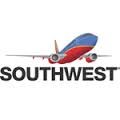 |  |  | 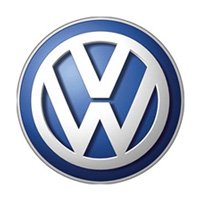 |
 | 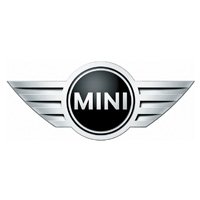 |  | ||




